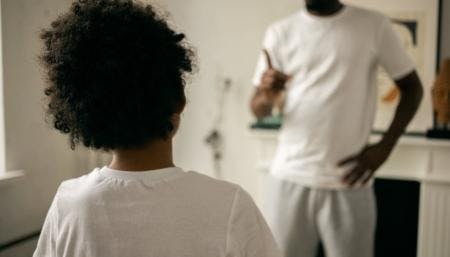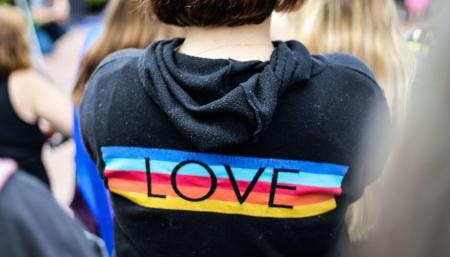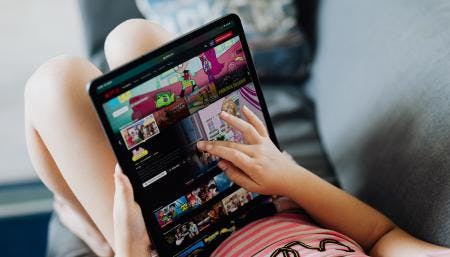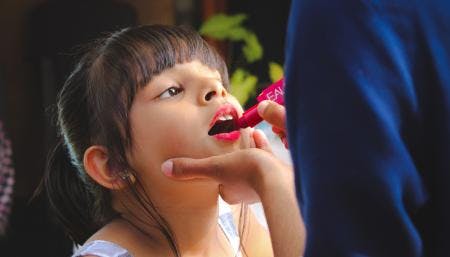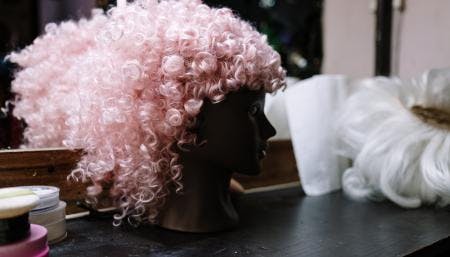The Little White Pill
5 Min Read•July 7, 2015•Mary Laufer
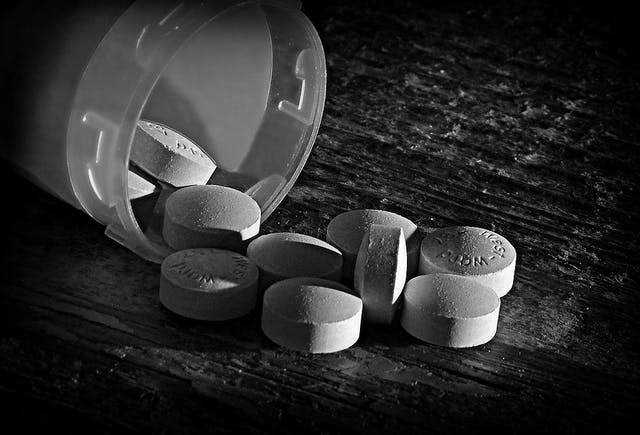
Something hit my broom and rolled around on the kitchen floor, ricocheting off the baseboards like a marble in a pinball game. At first I thought it was one of my daughter’s beads, so I continued to sweep, not paying much attention to it.
Eventually whatever it was stood still, and I bent down and brushed it into the dustpan along with a Cheerio, several toast crumbs, and a dried-up grape that had almost turned into a raisin. The object settled into a corner of the dustpan. It was white, unusual for a jewelry bead from Anna’s colorful collection. I shook off the crumbs and held it up to the light. There was no hole through the middle—it wasn’t a bead at all.
For a long time I stared at the mysterious object between my thumb and forefinger as if it were from another planet. Perhaps it was candy? But the edges were clearly defined. It looked more like a pill, a little white pill.
We had an assortment of medicines in the cupboard on the shelf above the spices. I took down a bottle of aspirin, opened the lid, and shook one tablet into the palm of my hand. Alongside the white pill, the aspirin was bigger, yet thinner. I compared the white pill with every painkiller and vitamin in the cupboard, but nothing was remotely similar.
I stood in a trance, trying to explain the pill’s appearance on my kitchen floor. No one in our family was taking prescription drugs. Could one of Anna’s friends have accidentally dropped her medication near the kitchen sink? I turned the pill over. It didn’t look like a prescription drug. There were no numbers on it, no markings, and no scoring.
The pill was so small and yet it scared me so much. What if my daughter was taking pills like these? It was no secret that Anna was trying to lose weight. She didn’t really need to; she looked the perfect weight to me. But being a typical sixteen-year-old girl, she’d been experimenting with one diet after another. Had she found some diet drug advertised on the Internet? Just last week a small brown box had come in the mail for her, and I had no idea what was inside. The pill’s surface was bumpy. It looked like a drug manufactured by a shady Internet company. Made under less-than-ideal conditions, its purity and potency would be questionable. Anna might not realize how dangerous a drug like this could be.
When I was in ninth grade, two older girls sat in the back seat of the bus I rode every day. They talked and laughed on the way to school and then on the entire way home. One of them, Beth, was overweight and sometimes the kids teased her. I never forgot the morning I climbed up the bus steps and she wasn’t there. Her friend was sitting alone and crying. “Did you hear?” someone asked me. “Beth took too many diet pills last night and died in her sleep!”
My hand shook now and the little white pill shook with it. I abandoned the broom and dustpan, put the pill in a sandwich bag and drove to the pharmacy at the grocery store. While I stood in line, I clutched the sandwich bag so hard that my knuckles turned as white as the pill.
A woman in a lab coat filled prescriptions for two people ahead of me. When I reached the window, she patiently listened to my story, then inspected the pill and frowned.
“I don’t know what it is,” she finally said. “I’ve never seen anything like it.”
She wrote down the telephone number for the local poison control center and handed me the slip of paper.
The word “poison” made me feel worse than I already did. I went home, picked up the phone and started to punch in the numbers. But before I finished, I set down the receiver. Whoever I talked to wouldn’t know what the pill was without seeing it. If I had to send it to a lab to be tested, it would take time to get the results.
I slowly walked down the hallway to Anna’s bedroom. Normally I respected her privacy, but today I had a search warrant. The pill bottle must still be around someplace. Maybe it was in her underwear drawer. From the label I’d learn exactly what the drug was.
I opened the door. Jeans and sweaters were draped over the desk chair. Schoolbooks, papers, and empty soda cans lay scattered on the floor. The bottle could be anywhere. I wouldn’t be able to find it without disrupting the room. Anna would hate me for going through her things, and if she were innocent, I’d hate myself for doing it.
A school bus rumbled down our street, and my heart sped up. The front door slammed.
“Hi, Mom!” Anna called.
“How was your day, honey?” I let her get a glass of milk and a granola bar before confronting her.
“Do you know what this is?” I asked, trying not to sound as though I were accusing her of a crime. I held up the sandwich bag, and she moved the pill closer to her blue eyes.
“It looks like an Equal,” she said matter-of-factly.
“An Equal?” I repeated.
“You know—the artificial sweetener. It used to come in packets.”
“This is an Equal?” I didn’t use the sugar substitute myself, but I bought it for my husband, right in the very store where I’d talked to the pharmacist.
“Did you think I was taking drugs?” Anna asked, laughing.
“I didn’t know what to think,” I said.
The Equal container lay on the kitchen counter near the coffee maker. I put one of the tablets from the container side by side with the one in my sandwich bag, and sure enough, they were the same size, shape and color. When my husband came home from work, he said he’d lost an Equal in the kitchen the day before.
I lay awake in bed that night and vowed that from then on I would give my daughter the benefit of the doubt instead of jumping to conclusions. Never again would I let my imagination take over. But as I drifted off to sleep, something kept nagging at me.
What, then, was in the little brown box that came in the mail last week?
Mary Laufer is a freelance writer living in Oregon. Her work has appeared in Cicada, Chicken Soup for the Girl's Soul, and What I Learned in My Bathtub.
